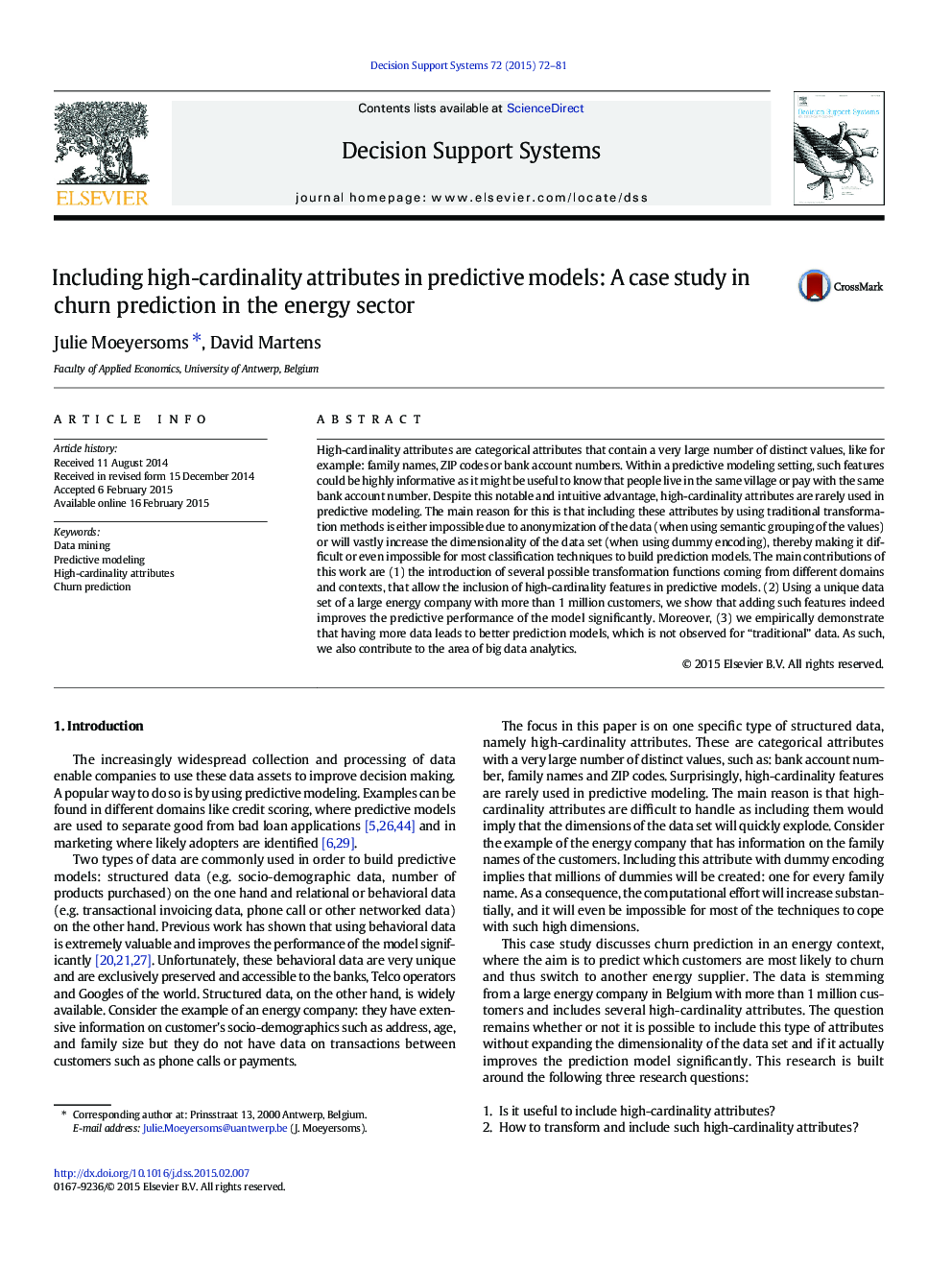| کد مقاله | کد نشریه | سال انتشار | مقاله انگلیسی | نسخه تمام متن |
|---|---|---|---|---|
| 554714 | 1451072 | 2015 | 10 صفحه PDF | دانلود رایگان |
• This study addresses the problem of including high-cardinality data
• Several possible transformation functions are introduced that allow to include high-cardinality data
• Using a unique data set with more than 1 million customers, we show that adding HC data improves the predictive performance
• We contribute to the area of big data analytics by empirically demonstrating that having more data leads to better models
High-cardinality attributes are categorical attributes that contain a very large number of distinct values, like for example: family names, ZIP codes or bank account numbers. Within a predictive modeling setting, such features could be highly informative as it might be useful to know that people live in the same village or pay with the same bank account number. Despite this notable and intuitive advantage, high-cardinality attributes are rarely used in predictive modeling. The main reason for this is that including these attributes by using traditional transformation methods is either impossible due to anonymization of the data (when using semantic grouping of the values) or will vastly increase the dimensionality of the data set (when using dummy encoding), thereby making it difficult or even impossible for most classification techniques to build prediction models. The main contributions of this work are (1) the introduction of several possible transformation functions coming from different domains and contexts, that allow the inclusion of high-cardinality features in predictive models. (2) Using a unique data set of a large energy company with more than 1 million customers, we show that adding such features indeed improves the predictive performance of the model significantly. Moreover, (3) we empirically demonstrate that having more data leads to better prediction models, which is not observed for “traditional” data. As such, we also contribute to the area of big data analytics.
Journal: Decision Support Systems - Volume 72, April 2015, Pages 72–81
